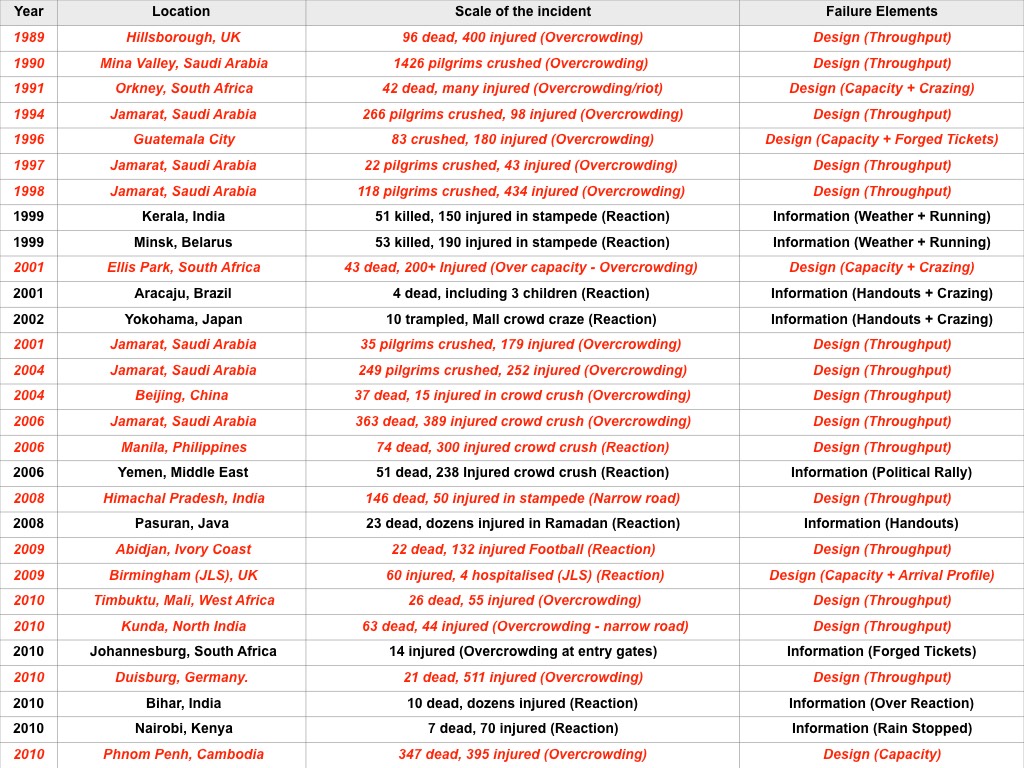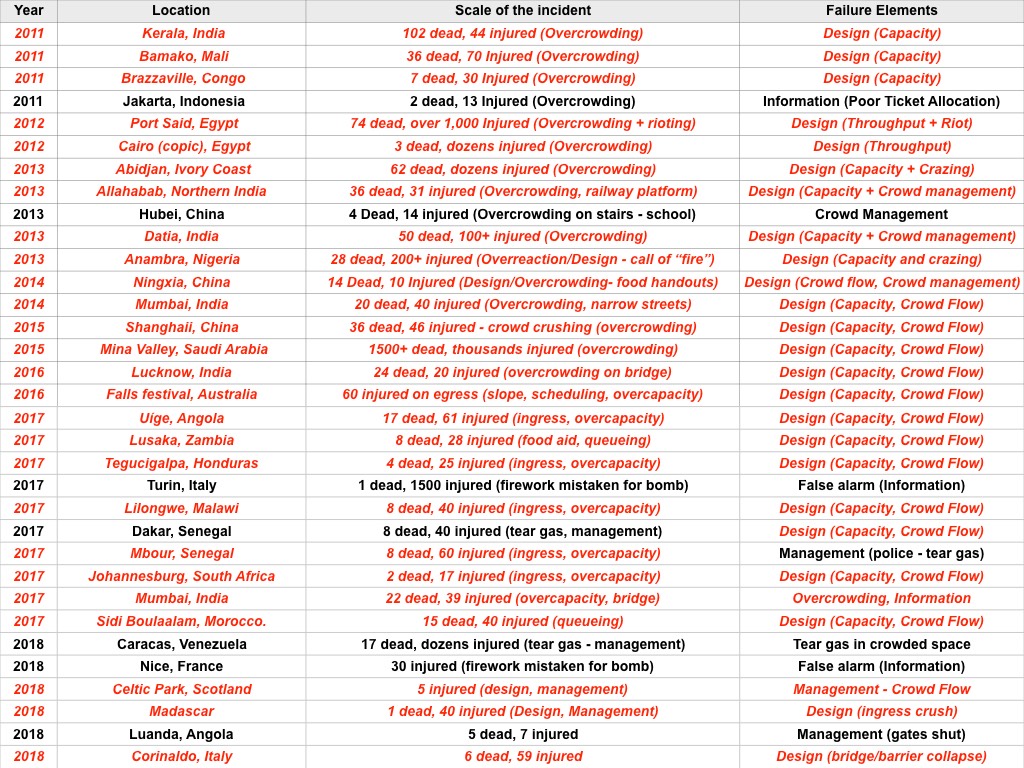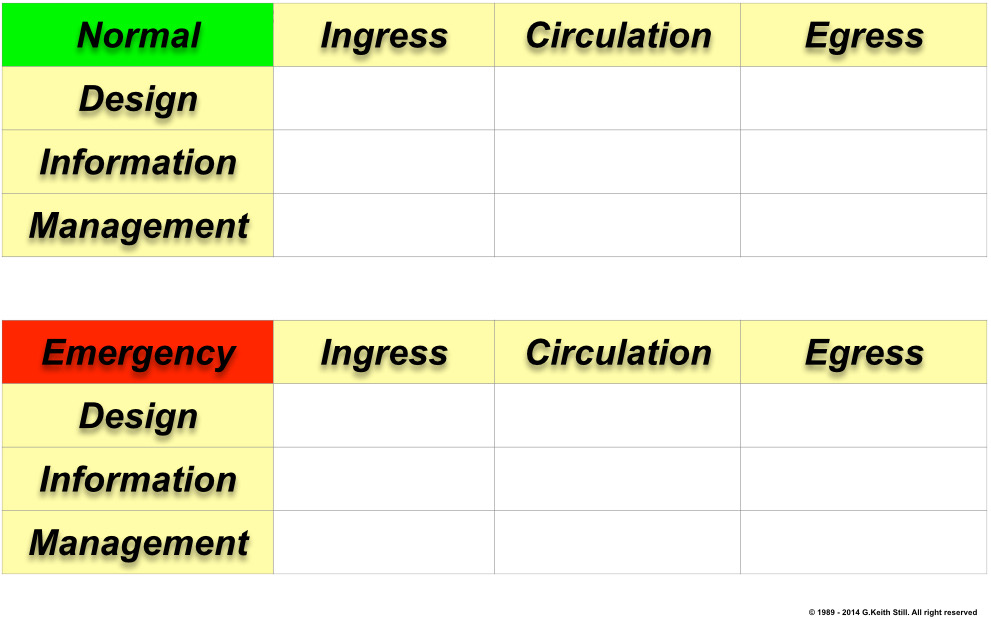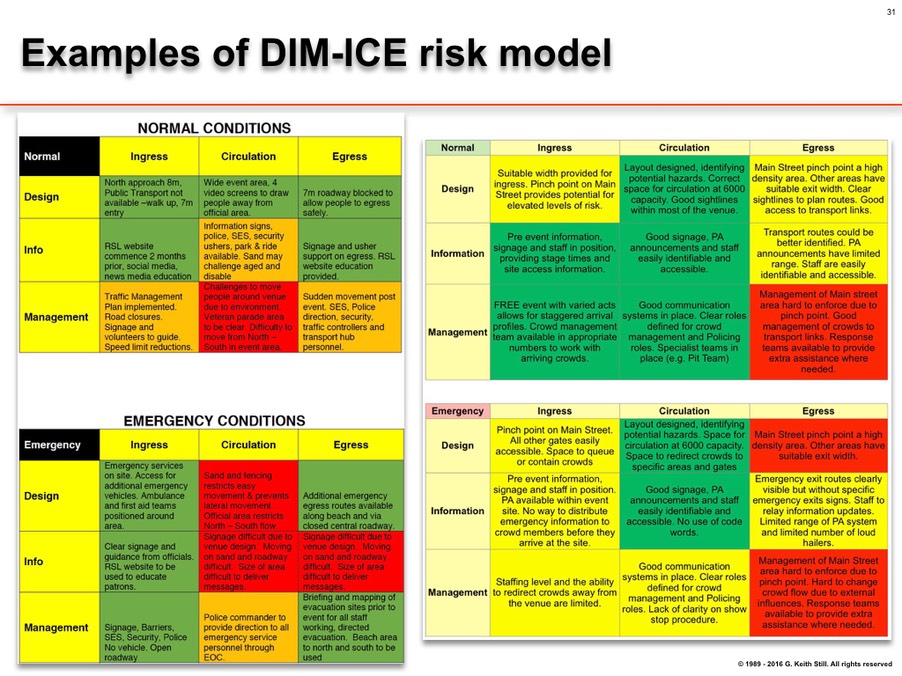Developing a safe, robust crowd management plan
It is important to understand, that the crowd coming towards a venue, will be conditioned by the environment which includes both hard and soft elements (design and information). It is equally important to understand that the event organiser/planner and the crowd manager have control over these influences.
Some of the major incidents over the last 27 years.


In the table above, I have highlighted those incidents that have design issues as the fundamental, underlying or distal causality. This highlights that the numerical analysis of flow rates, fill times and capacity are potentially the primary elements where improvements to crowd safety would have had most impact.
With this type of analysis my work has focussed on developing educational programs to improving crowd safety through the principles and applications of numerical techniques (not involving computer simulations). Although this was clearly defined in my original PhD thesis, it is still the single most important element to improving crowd safety.
We teach the principles of phases, influences and modes of crowd behaviour in the workshops. for this we apply the process of meta-modelling the event.
____________________________________________________
DIM-ICE risk model
The DIM-ICE risk model was developed from the analysis of accidents and incidents from around the world. Understanding the design (D) limitations (capacity, throughput), the information (social media, signage, PA announcements, news) elements and the management (M) systems (processes and procedures) are key to understanding how to influence crowd behaviour in places of public assembly.
Event phases, influences and modes of behaviour
We define an event in phases, influences and modes:
Three primary phases of crowd behaviour - Ingress, Circulation and Egress
Three primary influences on crowd behaviour - Design, Information and Management
Two primary modes of crowd behaviour - Normal and Emergency
This can be expressed in a matrix (see below) which we populate with the specifics of the event we are modelling.

Some examples of how this model has been used for events are shown below. By adding colour to the description you can highlight where in the phases and influences that risks are High (red), Medium (orange) or Low (green). The aim of this work is to draw the users attention to the underlying elements that give rise to crowd risks. it is a useful checklist to ensure the crowd maangement plan has considerer both the phases and influences of crowd behaviour. The colours assist in both understanding (red needs to improve, orange needs to be monitoried, green is the things you think you do well).

Event + environment + crowd = mood
Mood (the pervading atmosphere or tone of a place, situation or crowd) = Environment (such as type of venue, weather, music, terrain, hot, cold, noisy) and the Event (nature of the gathering, religious, festival, concert, public speech, demonstration, march, protest, performer) and the Crowd (demographics, character and composition of the crowd).
The Mood is a function of the Event (religious, festival, concert, speech), the Environment (hot, cold, noisy) and the Crowd (demographics, character and composition of the crowd).
Fundamental types of crowd behaviour
There are many different schools of thought on crowd composition, categorisation, behaviour and demographics. How crowd are composed, how they may react under different situations/circumstances and how they should be defined. I use these as a basic definition for crowd behaviours. Please note crowd behaviour can change from one classification to another during an event (several changes are of course, possible). I use this only to define the fundamentals of how different crowds may require different management strategies and it is important to both identify crowd moods/behaviours and act accordingly.
Casual - People coming and going; not organised but may be in loose groups. Will accept direction from authority. Well behaved.
Cohesive - Crowd assembled for a specific purpose or reason. No leadership.
Expressive - Crowd Gathering for a common purpose. Under loose leadership or following a particular motive. Not aggressive but sections of the crowd behaviour becoming mildly anti-social. May require active involvement by authorities.
Anti-social - Crowds engaged in acts of civil disobedience or direct action. Some sections may become aggressive and violent while other sections continue with different activities.
Incident - Crowd retreating from or reacting to a dangerous situation. Caused by serious anti-social behaviour and/or emergency situation.